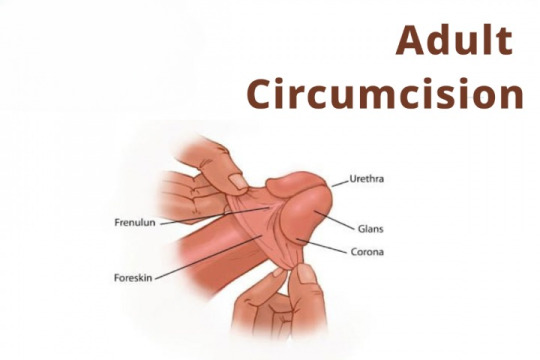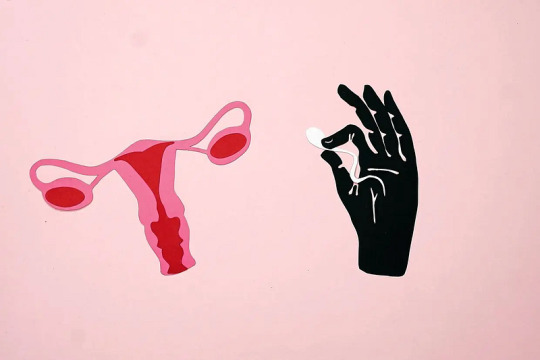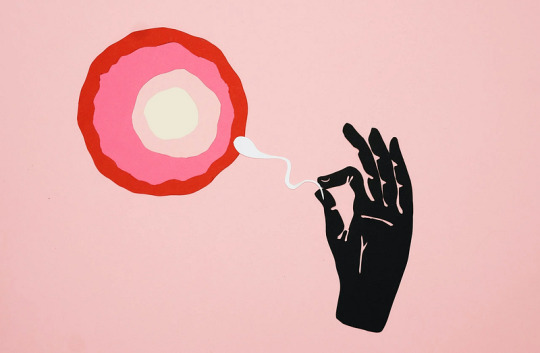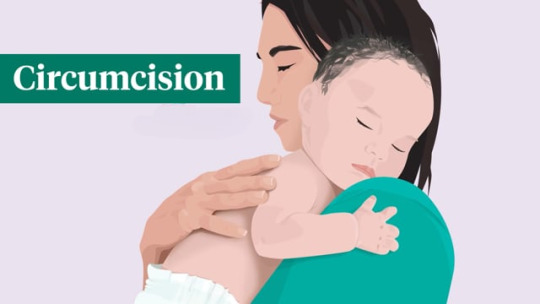Don't wanna be here? Send us removal request.
Text
Dietary Recommendations for Men Dealing with Infertility in Jaipur
Infertility can be a challenging issue for many couples, and for men, dietary choices play a crucial role in reproductive health. In Jaipur, where traditional diets and local foods have a significant impact on health, making informed dietary choices can improve fertility.

Here are some specific dietary recommendations for men dealing with infertility:
1. Incorporate Antioxidant-Rich Foods
Antioxidants help reduce oxidative stress, which can negatively affect sperm health. Men should include a variety of fruits and vegetables in their diet. Foods rich in antioxidants include:
Berries: Blueberries, strawberries, and raspberries are excellent choices.
Citrus Fruits: Oranges and lemons provide vitamin C, which can improve sperm quality.
Leafy Greens: Spinach and kale are packed with essential nutrients and antioxidants.
2. Focus on Healthy Fats
Healthy fats are important for hormone production and overall reproductive health. Men should aim to include:
Nuts and Seeds: Almonds, walnuts, and flaxseeds provide healthy omega-3 fatty acids.
Avocados: Rich in monounsaturated fats, avocados can help maintain hormone balance.
Olive Oil: A staple in the Mediterranean diet, olive oil is a great source of healthy fats.
3. Prioritize Lean Proteins
Protein is essential for sperm production and overall health. Men should choose lean protein sources such as:
Fish: Fatty fish like salmon and sardines are high in omega-3 fatty acids, which are beneficial for sperm health.
Poultry: Skinless chicken and turkey are excellent sources of lean protein.
Legumes: Lentils and beans are not only good sources of protein but also provide fiber and essential nutrients.
4. Limit Processed Foods and Sugars
High sugar intake and processed foods can lead to weight gain and hormonal imbalances, negatively affecting fertility. Men should limit:
Sugary Snacks: Sweets, pastries, and sugary beverages can contribute to obesity and poor sperm quality.
Processed Meats: Sausages and deli meats often contain preservatives and unhealthy fats that may impact fertility.
5. Stay Hydrated
Proper hydration is essential for overall health, including reproductive health. Men should aim to drink plenty of water throughout the day. Herbal teas and coconut water are also good options, especially in the hot climate of Jaipur.
6. Consider Traditional Foods
Incorporating local foods known for their health benefits can be advantageous. Some traditional foods that promote fertility include:
Bajra (Pearl Millet): A staple in Rajasthan, bajra is high in fiber and essential nutrients.
Dried Fruits: Nuts and dried fruits like dates and figs are excellent sources of energy and nutrients.
Milk and Dairy Products: Full-fat dairy can provide healthy fats and is believed to support hormone production.
7. Avoid Alcohol and Tobacco
Both alcohol and tobacco have been linked to decreased fertility in men. Limiting or avoiding these substances can improve overall health and enhance fertility.
8. Maintain a Healthy Weight
Excess body weight can lead to hormonal imbalances and reduced fertility. A balanced diet, along with regular physical activity, can help maintain a healthy weight.
9. Consult with a Nutritionist
For personalized dietary advice, consulting with a nutritionist familiar with local diets can be beneficial. They can provide tailored recommendations based on individual health needs and lifestyle.
Conclusion
Diet plays a significant role in male fertility, and making informed dietary choices can help improve reproductive health. Men in Jaipur can benefit from a balanced diet rich in antioxidants, healthy fats, and lean proteins while avoiding processed foods and excess sugars. By embracing a healthy lifestyle, couples can enhance their chances of conception and achieve better overall health.
0 notes
Text
What Are the Costs Associated with Circumcision Procedures?
Circumcision is a surgical procedure that involves the removal of the foreskin from the penis. While it is commonly performed on newborns, it can also be done later in life for various medical or personal reasons. The costs associated with circumcision can vary widely depending on several factors, including the age of the patient, the type of facility performing the procedure, geographical location, and whether or not insurance covers the procedure. Below are some key considerations regarding the costs of circumcision.

1. Types of Circumcision
Newborn Circumcision: This is typically performed in a hospital shortly after birth. The costs for newborn circumcision can range from $150 to $300 if done in a hospital setting. Some hospitals may bundle this cost with other maternity charges.
Pediatric Circumcision: For children older than a few months, circumcision may be performed in a surgical center or outpatient facility. The cost can range from $200 to $1,500 depending on the facility and the specific circumstances.
Adult Circumcision: This is often more complex than neonatal procedures and may require general anesthesia. Costs for adult circumcision can range from $1,000 to $3,000, including pre-operative consultations, the procedure itself, and post-operative follow-up.
2. Facility Fees
The type of facility where the procedure is performed greatly impacts costs. Hospitals typically charge more than outpatient clinics or private practices. Hospital stays, operating room time, and anesthesia fees can all contribute significantly to the overall expense.
3. Anesthesia Costs
The use of anesthesia can add to the overall costs of circumcision. Newborns may receive local anesthesia, while older children and adults may require sedation or general anesthesia. Anesthesia fees can vary based on the type used and the duration of the procedure, typically ranging from $200 to $1,000.
4. Consultation and Follow-Up Visits
Initial consultations with a pediatrician or urologist may involve additional costs, usually between $100 and $300. Follow-up appointments to monitor healing or address any complications can also add to the total expenses.
5. Insurance Coverage
Insurance coverage for circumcision varies widely. Many health insurance plans do not cover circumcision for newborns, considering it an elective procedure. However, coverage may be provided if the procedure is deemed medically necessary later in life. It’s crucial to check with your insurance provider for specific details regarding coverage and any potential out-of-pocket expenses.
6. Geographical Variation
Costs can also vary significantly based on geographical location. In urban areas, prices may be higher due to increased demand and operational costs. Conversely, rural areas may offer more affordable options.
7. Additional Costs
Pre-operative Tests: Some facilities may require pre-operative blood tests or other evaluations, which can add to the total costs.
Complications: If any complications arise during or after the procedure, additional medical treatment may be necessary, leading to increased costs.
Conclusion
The costs associated with circumcision procedures can vary greatly depending on various factors, including the age of the patient, type of facility, anesthesia requirements, and insurance coverage. It is important for individuals and families considering circumcision to research and understand all potential costs involved, including consultation and follow-up care. Consulting with a healthcare provider can help clarify the options available and provide a more accurate estimate of total expenses.
0 notes
Text
What diagnostic tests are typically used to assess male infertility in Jaipur?
Male infertility is a multifaceted issue that can arise from various underlying causes. In Jaipur, a city with a growing healthcare infrastructure, several diagnostic tests are utilized to identify and address male fertility concerns. If you or someone you know is facing infertility issues, understanding these tests can be an essential step toward effective diagnosis and treatment. Here’s an overview of the typical diagnostic tests used to assess male infertility:

1. Seminal Analysis (Semen Analysis)
Description: Seminal analysis is often the first test performed to evaluate male fertility. It examines the quantity and quality of sperm in a semen sample.
What It Measures:
Sperm Count: The number of sperm present in the ejaculate.
Sperm Motility: The percentage of sperm that are moving and their movement patterns.
Sperm Morphology: The shape and size of sperm.
Seminal Fluid Volume: The total volume of semen produced.
pH Level: The acidity or alkalinity of the semen.
Procedure: The patient provides a semen sample, usually after a period of abstinence. This sample is analyzed in a lab.
Where to Get It: Leading diagnostic centers and fertility clinics in Jaipur such as Fortis Escorts Hospital, and Medanta, offer seminal analysis services.
2. Hormonal Testing
Description: Hormonal testing assesses the levels of hormones that regulate sperm production and sexual function.
What It Measures:
Testosterone: The primary male sex hormone.
Luteinizing Hormone (LH): Stimulates testosterone production.
Follicle-Stimulating Hormone (FSH): Important for sperm production.
Prolactin: Elevated levels can affect fertility.
Procedure: Blood samples are drawn to measure hormone levels.
Where to Get It: This test is commonly available at diagnostic labs and hospitals like Apollo Hospitals and Rajasthan Hospital in Jaipur.
3. Genetic Testing
Description: Genetic testing identifies chromosomal abnormalities or genetic conditions that might affect fertility.
What It Measures:
Karyotype Analysis: Examines the number and structure of chromosomes.
Y-Chromosome Microdeletions: Specific deletions on the Y chromosome that can impact sperm production.
Procedure: Blood samples are analyzed for genetic markers.
Where to Get It: Specialized genetic labs and fertility clinics in Jaipur, such as Jaipur Fertility Centre, offer these services.
4. Scrotal Ultrasound
Description: A scrotal ultrasound provides images of the testicles and surrounding structures.
What It Measures:
Testicular Size and Structure: Identifies abnormalities like varicoceles or tumors.
Epididymal Issues: Evaluates conditions affecting sperm transport.
Procedure: This is a non-invasive imaging test using sound waves to create images of the scrotum.
Where to Get It: Available at major hospitals and diagnostic centers with imaging facilities, including Manipal Hospital and the Advanced Centre for Urology in Jaipur.
5. Post-Ejaculation Urine Analysis
Description: This test assesses whether sperm are present in the urine after ejaculation, which may indicate a condition known as retrograde ejaculation.
What It Measures:
Presence of Sperm: Detects sperm in the urine.
Procedure: Urine samples are collected after ejaculation and analyzed in a lab.
Where to Get It: This test can be conducted at fertility clinics and advanced diagnostic centers in Jaipur.
6. Testicular Biopsy
Description: A testicular biopsy is performed to directly examine the tissue of the testicles.
What It Measures:
Sperm Production: Assesses the presence of sperm within the testicular tissue.
Testicular Health: Identifies conditions like testicular failure.
Procedure: A small sample of testicular tissue is removed and examined under a microscope.
Where to Get It: Performed by urologists or fertility specialists at hospitals such as SMS Medical College Hospital or other specialized fertility centers in Jaipur.
Conclusion
Assessing male infertility involves a combination of diagnostic tests to pinpoint the underlying issues affecting sperm production and overall reproductive health. In Jaipur, a range of advanced medical facilities and diagnostic centers are equipped to perform these tests, offering a pathway to effective treatment and management. Consulting with a fertility specialist can help determine which tests are necessary based on individual symptoms and medical history.
For those seeking assistance, renowned institutions and clinics in Jaipur provide comprehensive diagnostic services and can guide you through the process of evaluation and treatment.
0 notes
Text
How does circumcision affect sexual function and sensitivity?
Circumcision, the surgical removal of the foreskin from the penis, is a procedure that can have various effects on sexual function and sensitivity. While experiences can vary widely among individuals, here’s a general overview of how circumcision might influence these aspects:

1. Sensitivity
Pre-Circumcision Sensitivity:
The foreskin, particularly its inner lining, contains a high concentration of nerve endings, which contribute to sexual sensitivity. This sensitivity can enhance sexual pleasure and arousal during intercourse.
Post-Circumcision Sensitivity:
After circumcision, the glans (head of the penis) becomes exposed and may initially be more sensitive due to direct contact with clothing and environmental factors. Over time, the skin on the glans tends to thicken and may become less sensitive as it adjusts to its new, more exposed state.
Variation in Sensitivity:
Some men report a decrease in sensitivity after circumcision, while others find that sensitivity remains unchanged or even increases. Individual differences play a significant role, and sensitivity can also be influenced by psychological factors and sexual experience.
2. Sexual Function
Impact on Sexual Function:
Most studies suggest that circumcision has a minimal impact on overall sexual function. Many men who have been circumcised report normal sexual functioning, including the ability to achieve and maintain an erection and experience orgasm.
Potential Changes:
Some men may experience changes in sexual pleasure or performance after circumcision. These changes might include differences in the intensity of orgasm or alterations in the sensation during intercourse. However, such changes are often subjective and can vary widely from person to person.
Psychological Factors:
The psychological impact of circumcision, such as concerns about sexual performance or body image, can also affect sexual function. Addressing any anxiety or discomfort with a healthcare professional can help mitigate these effects.
3. Long-Term Effects
Adaptation Period:
There is typically an adjustment period following circumcision during which the penis adapts to its new state. This period varies from person to person and can influence both sensitivity and sexual function.
Long-Term Satisfaction:
Research indicates that most men adapt well to circumcision and continue to experience satisfactory sexual function and pleasure. Long-term sexual satisfaction is often related to factors such as overall health, relationship dynamics, and personal sexual practices rather than the procedure itself.
4. Health and Hygiene Considerations
Reduced Risk of Infections:
Circumcision can reduce the risk of certain infections, including sexually transmitted infections (STIs) and urinary tract infections, which can contribute to better sexual health and function.
Improved Hygiene:
With the foreskin removed, maintaining hygiene is often easier, which can contribute to overall sexual comfort and health.
Conclusion
Circumcision can have varied effects on sexual sensitivity and function, and individual experiences differ. While some men may notice changes in sensitivity or sexual pleasure, many adapt well and maintain a high level of sexual satisfaction. It’s important for individuals considering circumcision or experiencing concerns post-procedure to discuss these issues with a healthcare provider to address any questions or complications effectively.
0 notes
Text
How Age Affects Male Fertility in the Context of Jaipur
Male fertility is a complex issue influenced by various factors, with age being one of the most significant. In Jaipur, as in many parts of the world, the age of prospective fathers is increasingly affecting reproductive health and outcomes. Understanding how age impacts male fertility can help couples make informed decisions about family planning.

1. Sperm Quality and Quantity
As men age, particularly after the age of 40, there is a gradual decline in sperm quality and quantity. Research indicates that older men may experience lower sperm motility, increased DNA fragmentation, and higher rates of abnormal sperm morphology. In Jaipur, where traditional family structures often encourage earlier childbearing, the trend of delayed parenthood may pose challenges related to decreased fertility.
2. Hormonal Changes
Aging affects hormone levels, particularly testosterone, which tends to decrease with age. Lower testosterone can lead to reduced libido, erectile dysfunction, and overall fertility issues treatment . In Jaipur, cultural expectations regarding masculinity and fatherhood can exacerbate the emotional and psychological impact of these changes.
3. Increased Risk of Genetic Disorders
Older paternal age is associated with a higher risk of genetic abnormalities in offspring, such as autism spectrum disorders and schizophrenia. As couples in Jaipur delay parenthood, the potential for these risks increases, prompting important discussions about genetic counseling and reproductive choices.
4. Lifestyle Factors
As men age, lifestyle factors such as stress, obesity, and health conditions (like diabetes and hypertension) often become more prevalent. In Jaipur’s urban environment, where lifestyle diseases are on the rise, these factors can further complicate fertility issues. Men must be proactive about maintaining a healthy lifestyle to mitigate these risks.
5. Psychological Impacts
The societal pressure to become a father at a certain age can lead to anxiety and stress for older men. In Jaipur, cultural norms often prioritize early marriage and parenthood, making it challenging for men who wish to have children later in life. This psychological burden can negatively affect fertility and overall well-being.
6. Importance of Medical Consultation
Men in Jaipur who are considering fatherhood later in life should seek medical advice to assess their fertility health. Regular check-ups, sperm analysis, and discussions about potential interventions can help identify issues early on. Awareness of age-related risks can empower men to make informed decisions.
Conclusion
In Jaipur, age significantly influences male infertility treatment , with various factors contributing to declining reproductive health. As societal norms evolve and more men consider fatherhood later in life, understanding the implications of age on fertility becomes crucial. By prioritizing health, seeking medical guidance, and addressing lifestyle factors, men can enhance their chances of successful parenthood, regardless of age.
0 notes
Text
The Role of Lifestyle in Male Infertility Cases in Jaipur
Male infertility is an increasingly significant concern worldwide, and Jaipur is no exception. Various factors contribute to male infertility, but lifestyle choices play a critical role in affecting male reproductive health. Understanding these influences can help in mitigating risks and improving fertility outcomes.

1. Diet and Nutrition
A balanced diet is crucial for reproductive health. In Jaipur, where traditional Indian diets often include rich, spicy foods, it’s essential to focus on nutritional balance. A diet high in antioxidants, vitamins (especially Vitamin C and E), and minerals (like zinc and selenium) can enhance sperm quality. Conversely, excessive consumption of processed foods, sugar, and unhealthy fats can negatively impact fertility.
2. Physical Activity
Regular exercise is vital for maintaining a healthy weight and overall well-being. Sedentary lifestyles, which are becoming more common in urban areas like Jaipur, can lead to obesity — a significant risk factor for infertility. Engaging in moderate physical activity helps regulate hormone levels, improves blood circulation, and can enhance sperm production.
3. Substance Use
The use of tobacco, alcohol, and illicit drugs has been linked to reduced fertility in men. In Jaipur, while traditional practices may discourage excessive drinking, tobacco use remains prevalent. Smoking can impair sperm motility and morphology, while heavy drinking can disrupt hormone levels, leading to fertility issues.
4. Stress and Mental Health
High stress levels can adversely affect hormone production and lead to conditions like erectile dysfunction and decreased libido. In a bustling city like Jaipur, the pressures of work, family, and social expectations can contribute to chronic stress. Mindfulness practices, yoga, and stress management techniques can significantly improve both mental health and fertility.
5. Environmental Factors
Urban environments expose individuals to various environmental toxins that can affect reproductive health. In Jaipur, air pollution and exposure to pesticides can have detrimental effects on sperm quality. It’s crucial for men to minimize exposure to harmful substances and consider using air purifiers or opting for organic products.
6. Sleep Patterns
Quality sleep is essential for hormonal balance and overall health. Inconsistent sleep patterns and insomnia can disrupt testosterone levels and lead to fertility issues. Establishing a regular sleep routine and creating a conducive sleep environment can help improve sleep quality.
Conclusion
In Jaipur, lifestyle factors significantly influence male infertility. By making informed choices regarding diet, exercise, substance use, stress management, and environmental exposure, men can enhance their reproductive health. Raising awareness and promoting healthy lifestyle changes can play a crucial role in addressing male infertility in the region. Collaborative efforts from healthcare providers, communities, and individuals are essential to tackle this growing concern effectively.
0 notes
Text
How Does Circumcision Impact Hygiene and Infection Prevention?
Circumcision, the surgical removal of the foreskin from the penis, has been a topic of debate regarding its health benefits, particularly concerning hygiene and infection prevention. This article explores how circumcision can influence these aspects.

Hygiene
Reduced Bacterial Growth: The foreskin can trap moisture and create an environment conducive to bacterial growth. Circumcision removes this area, potentially reducing the risk of bacterial infections.
Easier Cleaning: Circumcision treatment individuals often find it easier to maintain genital hygiene. Without the foreskin, there is less complexity in cleaning, which can encourage better hygiene practices and reduce the accumulation of smegma (a combination of dead skin cells, oils, and bacteria).
Odor Reduction: The presence of smegma can contribute to odor. Circumcision may help reduce this odor, promoting better overall hygiene.
Infection Prevention
Decreased Risk of UTIs: Some studies suggest that circumcision can lower the risk of urinary tract infections (UTIs) in infants. This is particularly relevant in the first year of life when UTIs can lead to more severe complications.
Lower Rates of STIs: Circumcision has been associated with a reduced risk of sexually transmitted infections (STIs), including HIV. Research indicates that circumcised men have lower rates of HIV transmission, possibly due to the decreased likelihood of micro-abrasions that can occur during sexual activity.
Reduced Penile Cancer Risk: Although rare, penile cancer is more prevalent in uncircumcised men. Circumcision treatment may lower the risk by removing the foreskin, which can harbor cancer-causing agents, such as human papillomavirus (HPV).
Lower Rates of Balanitis and Phimosis: Circumcision eliminates the risk of conditions like balanitis (inflammation of the glans) and phimosis (a condition where the foreskin cannot be retracted), both of which can lead to infections.
Considerations
While circumcision has hygiene and infection prevention benefits, it is essential to consider the following:
Cultural and Personal Factors: The decision to circumcise is often influenced by cultural, religious, or personal beliefs. It’s important to respect individual choices and contexts.
Surgical Risks: As with any surgical procedure, circumcision carries potential risks, including bleeding, infection, and complications from anesthesia. These factors should be weighed against the benefits.
Education on Hygiene: Regardless of circumcision status, proper education on hygiene practices is crucial for everyone. Good hygiene can effectively prevent infections and promote overall health.
Conclusion
Circumcision treatment can have a positive impact on hygiene and infection prevention. While it may reduce the risk of certain infections and facilitate easier cleaning, personal choice, cultural considerations, and proper hygiene education remain paramount in making informed decisions about circumcision.
0 notes
Text
What are the ethical considerations surrounding male circumcision?
Male circumcision, the surgical removal of the foreskin from the penis, raises several ethical considerations that intersect with cultural, religious, medical, and human rights perspectives. These considerations have sparked debates globally, influencing medical practices, legal regulations, and societal norms.

Cultural and Religious Perspectives
One of the primary ethical dimensions of male circumcision lies in its cultural and religious significance. Many cultures and religions practice circumcision as a rite of passage or as a religious obligation. For example, circumcision is integral to Judaism, Islam, and various African cultures. In these contexts, circumcision is often deeply intertwined with identity, tradition, and community belonging.
From an ethical standpoint, respecting cultural and religious practices involves recognizing the importance of autonomy in decision-making, particularly when considering the rights of parents to make decisions for their children based on their cultural or religious beliefs. However, ethical questions arise when these practices potentially conflict with the rights of the child to bodily integrity and autonomy.
Medical Justifications and Risks
From a medical perspective, circumcision is sometimes advocated for its potential health benefits, such as reduced risks of urinary tract infections, sexually transmitted infections (including HIV), and penile cancer. These health benefits are particularly relevant in regions with high prevalence of certain infections. Ethical considerations here include weighing potential health benefits against the risks and complications associated with the procedure, as well as ensuring that medical recommendations are based on sound evidence and not imposed without informed consent.
Informed Consent and Autonomy
A critical ethical issue surrounding male circumcision is the concept of informed consent. Infants and young children cannot provide informed consent for the procedure, which raises questions about the extent to which parents can make decisions on behalf of their children when it involves irreversible alterations to the child’s body. Advocates for children’s rights argue that circumcision should only be performed with explicit and informed consent from the individual undergoing the procedure, once they are old enough to understand its implications.
Gender Equality and Human Rights
In discussions of male circumcision, comparisons are often drawn with female genital cutting, which is widely condemned and considered a violation of human rights. Ethical debates on this topic consider whether male circumcision, particularly when performed without medical necessity and without the individual’s consent, constitutes a violation of bodily integrity and autonomy akin to female genital cutting. This perspective highlights the importance of gender equality in ethical considerations surrounding bodily modifications.
Cultural Sensitivity and Dialogue
Navigating the ethical landscape of male circumcision requires sensitivity to diverse cultural practices and beliefs. Ethical frameworks should aim to balance respect for cultural traditions with the protection of individual rights and well-being. Open dialogue and education play crucial roles in fostering understanding and mutual respect among communities with differing views on circumcision.
Conclusion
In conclusion, male circumcision is a complex issue that touches on cultural traditions, religious practices, medical considerations, and human rights. Ethical discussions surrounding circumcision involve weighing the benefits and risks, respecting cultural diversity, ensuring informed consent, and safeguarding the rights and autonomy of individuals, particularly those who cannot consent for themselves. Ultimately, addressing the ethical dimensions of male circumcision requires a balanced approach that considers both the cultural contexts and the rights of the individual.
0 notes
Text
How does male circumcision affect sexual function and sensitivity?
Male circumcision, the surgical removal of the foreskin from the penis, has been a topic of medical debate and cultural practice for centuries. Beyond its cultural and religious significance, one of the most discussed aspects of circumcision is its potential impact on sexual function and sensitivity in men.

The Procedure and Physical Changes
During circumcision treatment, the foreskin, which covers the head (glans) of the penis, is surgically removed. This alters the anatomy of the penis, exposing the glans permanently. The extent of the removal can vary slightly depending on the method used and individual anatomy, but the general effect is the exposure of the glans and the removal of the foreskin’s tissue.
Potential Effects on Sensitivity
One of the primary concerns regarding circumcision is whether it affects penile sensitivity and sexual function. The foreskin contains a dense concentration of nerve endings, including specialized nerve endings called Meissner’s corpuscles, which are sensitive to light touch. Proponents of circumcision argue that removing the foreskin may decrease sensitivity in the penis, potentially leading to less intense sexual pleasure.
Research Findings
Scientific studies examining the impact of circumcision on sexual function and sensitivity have yielded mixed results:
Sensitivity: Some studies suggest that circumcision may reduce sensitivity in the penis, particularly to fine touch and gentle stimuli. This could theoretically affect sexual pleasure, although the extent of this effect varies among individuals.
Sexual Function: Research has not consistently shown significant differences in sexual function between circumcised and uncircumcised men. Factors such as psychological perceptions, cultural beliefs, and individual variations in anatomy and sexual response play significant roles.
Health Benefits: Circumcision has been associated with reduced risks of certain infections, including urinary tract infections and sexually transmitted infections like HIV. These potential health benefits are often considered in discussions about circumcision.
Psychological and Cultural Factors
Beyond the physical effects, circumcision can also have psychological and cultural impacts on individuals. For some, circumcision is an important cultural or religious rite that contributes to identity and belonging within a community. Others may experience psychological effects related to body image or sexual self-perception.
Conclusion
In conclusion, while male circumcision treatment alters the anatomy of the penis and may potentially affect sensitivity to some degree, the actual impact on sexual function and pleasure is complex and varies among individuals. Factors such as cultural beliefs, personal experiences, and overall health considerations often influence decisions regarding circumcision. Further research is needed to better understand the long-term effects of circumcision on sexual function and sensitivity, taking into account individual variations and cultural contexts.
0 notes
Text
How does male circumcision affect sexual function and sensitivity?
Male circumcision is a surgical procedure that involves the removal of the foreskin from the penis. This practice has cultural, religious, and sometimes medical significance in various societies around the world. One of the debated aspects of male circumcision is its impact on sexual function and sensitivity. Understanding these effects requires a nuanced exploration of the physiological changes and their potential implications.

Impact on Sexual Function
Mixed Findings: Research on the impact of circumcision on sexual function and satisfaction has yielded mixed results. Some studies report no significant difference in sexual function between circumcised and uncircumcised men, while others suggest subtle changes in sensitivity or sexual performance.
Perceived Differences: Anecdotal evidence and personal experiences vary widely. Some men report no noticeable change in sexual pleasure or function post-circumcision, while others describe differences in sensitivity or sexual response.
Psychological Factors: Cultural and psychological factors can influence perceptions of sexual function after circumcision. For example, expectations about sexual performance or pleasure may affect how men perceive the effects of circumcision.
Considerations and Controversies
Medical Benefits vs. Risks: Circumcision is associated with reduced risk of certain infections, such as urinary tract infections and sexually transmitted infections like HIV. These potential health benefits are weighed against the risks and ethical considerations surrounding the procedure.
Individual Variation: Sensitivity and sexual response can vary widely among individuals, regardless of circumcision status. Factors such as age at circumcision, technique used, and overall sexual health play significant roles in determining outcomes.
Sexual Education and Communication: Open dialogue between healthcare providers and patients, as well as comprehensive sexual education, are essential. This ensures that individuals have accurate information about circumcision and its potential effects on sexual health.
Conclusion
Male circumcision can affect sexual function and sensitivity through changes in penile anatomy and nerve distribution. While some studies suggest minor differences in sexual sensation and performance, the overall impact varies among individuals. Cultural, religious, and medical considerations influence decisions about circumcision. Ultimately, informed discussions and individualized care are crucial in addressing concerns related to sexual function and sensitivity following circumcision.
0 notes
Text
Are there specific post-operative care instructions following circumcision?

Immediate Post-Operative Care:
Dressing and Bandaging: After the procedure, a dressing or gauze may be applied to the penis to protect the surgical site and absorb any minimal bleeding. This dressing should generally be left in place for the first 24 hours unless otherwise instructed by your healthcare provider.
Rest and Activity: It’s essential to rest as much as possible during the initial recovery period. Avoid strenuous activities, lifting heavy objects, or vigorous exercise for at least the first week to prevent strain and promote healing.
Pain Management: Mild discomfort or pain is common after circumcision. Your healthcare provider may prescribe pain relievers or recommend over-the-counter medications such as acetaminophen (Tylenol) or ibuprofen (Advil, Motrin) to manage pain and reduce swelling.
Hygiene and Wound Care:
Cleaning: Proper hygiene is crucial to prevent infection. Your healthcare provider will likely recommend gently rinsing the penis with warm water and mild soap once or twice a day. Avoid scrubbing the area vigorously.
Avoiding Irritants: Refrain from using harsh soaps, perfumes, or lotions near the surgical site as they may irritate the skin or cause an allergic reaction.
Swelling and Bruising: Some swelling and bruising around the penis are normal after circumcision. Applying an ice pack wrapped in a cloth to the area for 10–15 minutes at a time can help reduce swelling during the first 24–48 hours.
Managing Urination:
Urination: It’s normal for urination to be uncomfortable or slightly painful initially. Drinking plenty of fluids can dilute urine and reduce discomfort. Avoid holding urine for extended periods and aim to urinate frequently.
Dressings and Urination: If a dressing or gauze is in place, it may be necessary to change it after urination to maintain cleanliness and prevent infection.
Potential Complications and When to Seek Medical Help:
Signs of Infection: Watch for signs of infection such as increased pain, redness, warmth, swelling, pus-like discharge, or fever. Contact your healthcare provider immediately if you experience any of these symptoms.
Bleeding: Minor oozing or spotting of blood is normal for the first day or two. If bleeding persists or increases significantly, notify your healthcare provider.
Difficulty Urinating: If you experience difficulty urinating or notice a decrease in urine output, inform your healthcare provider promptly.
Follow-Up Appointments:
Schedule Follow-Up: Your healthcare provider will schedule a follow-up appointment to monitor healing and remove any stitches if necessary. Follow these appointments diligently to ensure proper recovery.
Resuming Normal Activities: Your healthcare provider will advise when it’s safe to resume regular activities, including sexual activity and bathing.
By following these post-operative care instructions diligently, you can promote optimal healing and reduce the risk of complications after circumcision. Always consult your healthcare provider if you have any questions or concerns during the recovery process.
0 notes
Text
What are the potential risks and complications associated with circumcision?

Here are some of the potential risks and complications associated with circumcision:
Bleeding: Bleeding is a common risk during and immediately after circumcision. While minor bleeding can often be managed with pressure or cauterization, excessive bleeding may require further medical intervention.
Infection: Infection at the site of circumcision is another concern. Proper sterile techniques and post-operative care can minimize this risk, but it remains a possibility. Signs of infection include increased redness, swelling, warmth, or discharge from the wound.
Pain: Pain is expected after circumcision, particularly during the first few days. Pain management strategies such as over-the-counter pain relievers or local anesthetics may be used to alleviate discomfort.
Damage to the penis: In rare cases, there may be damage to the penis during the procedure, such as injury to the urethra or excessive removal of skin. This can result in complications that may require corrective surgery.
Adverse reactions to anesthesia: If anesthesia is used during the procedure, there is a risk of allergic reactions or adverse effects. This risk is typically minimized through careful evaluation of the patient’s medical history and proper administration of anesthesia.
Cosmetic concerns: Improper technique or healing may result in an uneven appearance or excessive scarring of the penile shaft. While most cosmetic issues can be addressed with additional procedures, they can cause psychological distress.
Complications in infants: Circumcision in newborns carries specific risks, including excessive bleeding, infection, or improper healing. Careful monitoring and post-operative care are crucial to reduce these risks.
Psychological and sexual considerations: Some individuals may experience psychological distress or changes in sexual sensitivity following circumcision. These effects can vary widely among individuals.
Rare complications: Although rare, complications such as buried penis, where the penis becomes partially or completely concealed by surrounding tissue, or meatal stenosis, a narrowing of the urethral opening, can occur.
Cultural and ethical considerations: In some communities or families, circumcision may be performed without adequate medical oversight, increasing the risk of complications due to non-sterile conditions or unskilled practitioners.
Before undergoing circumcision, individuals and parents of infants should discuss the procedure thoroughly with healthcare providers, weigh the potential benefits against the risks, and ensure that the procedure is performed by a qualified healthcare professional in a safe and sterile environment. Prompt recognition and management of any complications that arise are essential for minimizing long-term consequences and ensuring optimal outcomes.
#Circumcision Surgery in Jaipur#Circumcision Treatment in Jaipur#Male Circumcision in Jaipur#Circumcision Centre in jaipur#Advanced Circumcision Clinic in Jaipur#Circumcision Centre Near me
0 notes
Text
At what age is male circumcision typically performed?
Male circumcision, the surgical removal of the foreskin covering the head of the penis, is typically performed at different ages depending on cultural, religious, and medical considerations.

Here’s an overview of when circumcision is typically performed:
Infancy:
1. Timing:
Within the First Few Days: In many cultures and medical practices, circumcision is commonly performed within the first few days after birth. This early timing is believed to make the procedure simpler and less traumatic for the infant.
2. Reasons:
Cultural and Religious: Many families choose circumcision for their sons shortly after birth due to cultural or religious traditions. For example, in Judaism and Islam, circumcision is an important ritual.
Medical: Some medical organizations suggest that circumcision in infancy may have health benefits, such as a reduced risk of urinary tract infections (UTIs) and certain sexually transmitted infections (STIs) later in life.
3. Procedure:
Simple and Quick: Circumcision in infancy is typically a quick procedure, often performed under local anesthesia. The recovery time is usually short, and complications are rare when performed by trained healthcare professionals.
Childhood and Adolescence:
1. Medical Reasons:
Recurrent Infections: If a child experiences recurrent urinary tract infections or certain penile conditions (like phimosis or balanitis) that do not respond to other treatments, circumcision may be recommended.
2. Cultural or Religious Considerations:
Families who did not opt for circumcision at birth may choose to do so for cultural, religious, or personal reasons during childhood or adolescence.
3. Procedure:
More Complex: Circumcision in older children and adolescents may require general anesthesia due to the child’s increased awareness and sensitivity. The recovery period is longer compared to infants.
Adulthood:
1. Medical Indications:
Phimosis: In adulthood, circumcision may be performed if a man develops phimosis (tight foreskin that cannot be pulled back over the head of the penis) that does not respond to other treatments.
2. Personal Choice:
Conversion or Personal Preference: Some adults may choose circumcision for personal reasons, such as conversion to a religion that practices circumcision or perceived hygiene benefits.
3. Procedure:
More Involved: Circumcision in adults is a more complex surgical procedure compared to infants or children, often requiring general anesthesia and involving a longer recovery period.
Considerations:
Health Benefits vs. Risks: The decision to circumcise at any age involves weighing potential health benefits (like reduced UTI risk and easier hygiene) against the risks of the procedure (such as bleeding, infection, and surgical complications).
Cultural and Ethical Considerations: Circumcision is a culturally and ethically sensitive issue, and decisions should be made with consideration of religious beliefs, personal preferences, and medical guidance.
In conclusion, circumcision is most commonly performed in infancy for cultural, religious, and perceived health benefits. However, it can also be performed later in childhood, adolescence, or adulthood for medical reasons or personal choice, with each age group presenting unique considerations for the procedure.
0 notes
Text
Is circumcision recommended for infants, children, or adults, and why?

Infants:
1. Medical Reasons:
Prevention of UTIs (Urinary Tract Infections): Some studies suggest that circumcised infants may have a lower risk of urinary tract infections in the first year of life.
Reduced Risk of Penile Problems: Circumcision may decrease the likelihood of conditions like phimosis (tight foreskin that cannot be pulled back over the head of the penis) and balanitis (inflammation of the head of the penis).
Lower Risk of STIs (Sexually Transmitted Infections): Research indicates that circumcision can reduce the risk of certain sexually transmitted infections, including HIV, in adulthood.
2. Cultural and Religious Reasons:
Many families choose circumcision for their sons due to cultural or religious beliefs and traditions.
3. Procedure and Recovery:
Circumcision is generally performed soon after birth, typically within the first few days. The procedure is relatively quick and uncomplicated in infants, and recovery is usually rapid.
Children and Adolescents:
1. Medical Indications:
Circumcision may be recommended in older children and adolescents if they develop recurrent infections or certain penile conditions that do not respond to other treatments.
2. Personal and Religious Considerations:
Families who did not opt for circumcision at birth may choose it later for personal, cultural, or religious reasons.
3. Procedure and Recovery:
The procedure in older children and adolescents may require general anesthesia and has a longer recovery period compared to infants.
Adults:
1. Medical Reasons:
Circumcision in adulthood may be recommended for conditions such as phimosis (if non-surgical treatments fail) or recurrent infections that do not respond to other therapies.
2. Personal Choice:
Some adults may choose circumcision for personal reasons, such as cultural or religious conversion, or perceived hygiene benefits.
3. Procedure and Recovery:
Circumcision in adults is a more complex procedure compared to infants or children, involving general anesthesia and a longer recovery period.
Considerations:
Health Benefits vs. Risks: While circumcision may offer certain health benefits, it is not without risks, such as bleeding, infection, or surgical complications.
Ethical and Cultural Perspectives: The decision to circumcise involves ethical considerations regarding bodily autonomy, cultural traditions, and parental authority.
Medical Guidance: It’s essential for parents to discuss circumcision with healthcare providers to understand the specific benefits and risks based on individual circumstances.
In conclusion, circumcision is recommended in infancy primarily for medical and cultural reasons, with potential health benefits. For older children, adolescents, and adults, circumcision may be considered for medical conditions or personal reasons, but the decision should be guided by medical advice and informed consent.
#Circumcision Surgery in Jaipur#Circumcision Treatment in Jaipur#Advanced Circumcision Clinic in Jaipur
0 notes
Text
What role does lifestyle play in male infertility cases?
Lifestyle factors play a crucial role in male infertility, influencing sperm quality, quantity, and overall reproductive health. While genetics and medical conditions can contribute to infertility, lifestyle choices are within an individual’s control and can significantly impact fertility outcomes.

Smoking and Tobacco Use: Smoking tobacco is strongly associated with decreased sperm count, motility (ability to swim), and morphology (shape and size of sperm). It also increases oxidative stress in the body, leading to DNA damage in sperm cells. Second-hand smoke exposure may also have similar detrimental effects.
Alcohol Consumption: Excessive alcohol intake can disrupt hormone production, including testosterone levels, and impair sperm production and quality. Chronic alcohol use may also lead to liver damage and affect the body’s ability to metabolize hormones effectively.
Drug Use: Recreational drugs like marijuana, cocaine, and anabolic steroids can interfere with hormone regulation and disrupt normal sperm development. These substances can also contribute to erectile dysfunction and other reproductive health issues.
Obesity and Poor Diet: Obesity is linked to hormonal imbalances, such as reduced testosterone and increased estrogen levels, which can impair sperm production. A diet lacking in essential nutrients (vitamins, minerals, antioxidants) may also negatively impact sperm quality and overall reproductive function.
Stress and Mental Health: Chronic stress can elevate cortisol levels, which may suppress testosterone production and sperm formation. Stress management techniques, such as mindfulness and relaxation exercises, can potentially mitigate these effects.
Environmental Factors: Exposure to environmental pollutants, such as pesticides, heavy metals (lead, mercury), and chemicals found in plastics, can disrupt hormone function and impair sperm production. Occupational exposures in industries involving chemicals or high temperatures (like welding or certain manufacturing jobs) can also affect male fertility.
Heat Exposure: Prolonged exposure of the testicles to high temperatures, such as from frequent sauna or hot tub use, wearing tight underwear or clothing, or prolonged sitting, can raise testicular temperatures and hinder sperm production.
Physical Activity: While moderate exercise is generally beneficial for overall health, excessive endurance exercise can temporarily reduce testosterone levels and affect sperm production. Finding a balance in physical activity is essential for maintaining fertility.
Addressing lifestyle factors through healthier choices can potentially improve sperm parameters and enhance fertility outcomes. Quitting smoking, moderating alcohol consumption, maintaining a healthy weight through diet and exercise, managing stress effectively, and minimizing exposure to environmental toxins are crucial steps. Consulting with a healthcare provider specializing in male fertility can provide further guidance and evaluation if infertility issues persist despite lifestyle modifications.
0 notes
Text
What are the medical indications for circumcision?

Here are the primary medical indications for circumcision:
1. Prevention of Penile Conditions:
Reduced Risk of Urinary Tract Infections (UTIs): Circumcision has been shown to lower the risk of UTIs in infants, particularly in the first year of life. This is because bacteria can potentially collect under the foreskin, leading to infections.
Decreased Risk of Balanitis: Balanitis is an inflammation of the glans (head) of the penis, which can occur due to poor hygiene or infection. Circumcision reduces the likelihood of this condition by eliminating the foreskin where bacteria can accumulate.
2. Sexually Transmitted Infections (STIs):
Lower Risk of HIV Transmission: Studies have indicated that circumcision reduces the risk of heterosexual transmission of HIV in men. This is because the inner foreskin is susceptible to HIV infection due to its high concentration of target cells.
Reduced Risk of HPV and Herpes: Circumcision has also been associated with a lower risk of contracting human papillomavirus (HPV) and herpes simplex virus (HSV-2) infections.
3. Penile Cancer Prevention:
Circumcision significantly reduces the risk of developing penile cancer, particularly when performed early in life. This is believed to be due to decreased accumulation of smegma (a buildup of dead skin cells, oils, and moisture) and reduced exposure to potential carcinogens.
4. Improvement of Sexual Function and Hygiene:
Some studies suggest that circumcision may lead to improved genital hygiene, as it eliminates the need for retracting and cleaning under the foreskin.
Circumcision does not negatively impact sexual function or pleasure in men who are circumcised as infants or children.
5. Treatment for Certain Medical Conditions:
Phimosis: Circumcision may be recommended for individuals with phimosis, a condition where the foreskin is too tight to retract over the glans, causing discomfort or difficulty with hygiene.
Para phimosis: In cases where the foreskin becomes trapped behind the glans and cannot be pulled back over it, circumcision may be necessary to alleviate the condition.
In conclusion, the decision to undergo circumcision is often based on a combination of medical advice, cultural beliefs, and personal preferences. It is essential for parents and individuals to discuss the potential benefits and risks with healthcare providers to make an informed decision that aligns with their values and medical needs.
0 notes
Text
Are there specialized clinics or hospitals in Jaipur that focus on male infertility treatments?

Here are some notable clinics and hospitals in Jaipur known for their expertise in male infertility treatments:
Manipal Fertility:
Manipal Fertility, a part of Manipal Hospitals, is renowned for its state-of-the-art fertility services. They offer a wide range of treatments for male infertility, including diagnostic tests like semen analysis, hormonal evaluations, and specialized procedures such as sperm retrieval techniques (TESA, PESA).
2. Wellspring IVF & Women’s Hospital:
Wellspring IVF & Women’s Hospital is another prominent center in Jaipur that specializes in infertility treatments. They have a dedicated team of fertility specialists who provide personalized care for male infertility issues, including sperm disorders and genetic conditions affecting fertility.
3. Santokba Durlabhji Memorial Hospital (SDMH):
SDMH is a reputed multispecialty hospital in Jaipur that offers comprehensive infertility services. They have a dedicated department for reproductive medicine and assisted reproduction, providing advanced treatments like intrauterine insemination (IUI), in vitro fertilization (IVF), and surgical sperm retrieval techniques.
4. Bhandari Hospital and Research Centre:
Bhandari Hospital is known for its expertise in reproductive medicine and infertility treatments. They offer diagnostic services for male infertility, along with treatment options such as medication, surgery, and assisted reproductive technologies (ART) to help couples achieve successful pregnancies.
5. Hope Infertility Clinic:
Hope Infertility Clinic is a specialized center in Jaipur that focuses on infertility treatments, including male infertility. They provide comprehensive evaluations, counseling, and personalized treatment plans using the latest techniques and technologies.
These clinics and hospitals in Jaipur are equipped with modern infrastructure, experienced fertility specialists, and supportive staff to assist couples facing male infertility challenges. They aim to provide compassionate care while employing evidence-based approaches to enhance the chances of conception. Prior to visiting any clinic, it’s advisable to research their specific services, success rates, and patient reviews to make an informed decision about the most suitable healthcare provider for your needs.
0 notes